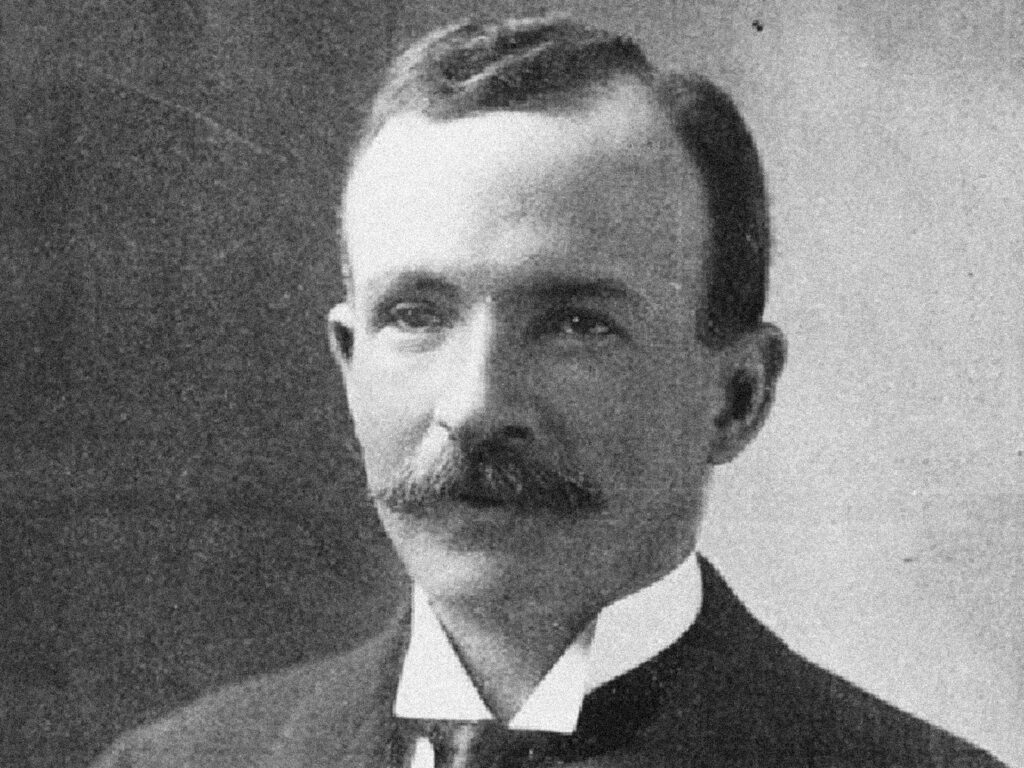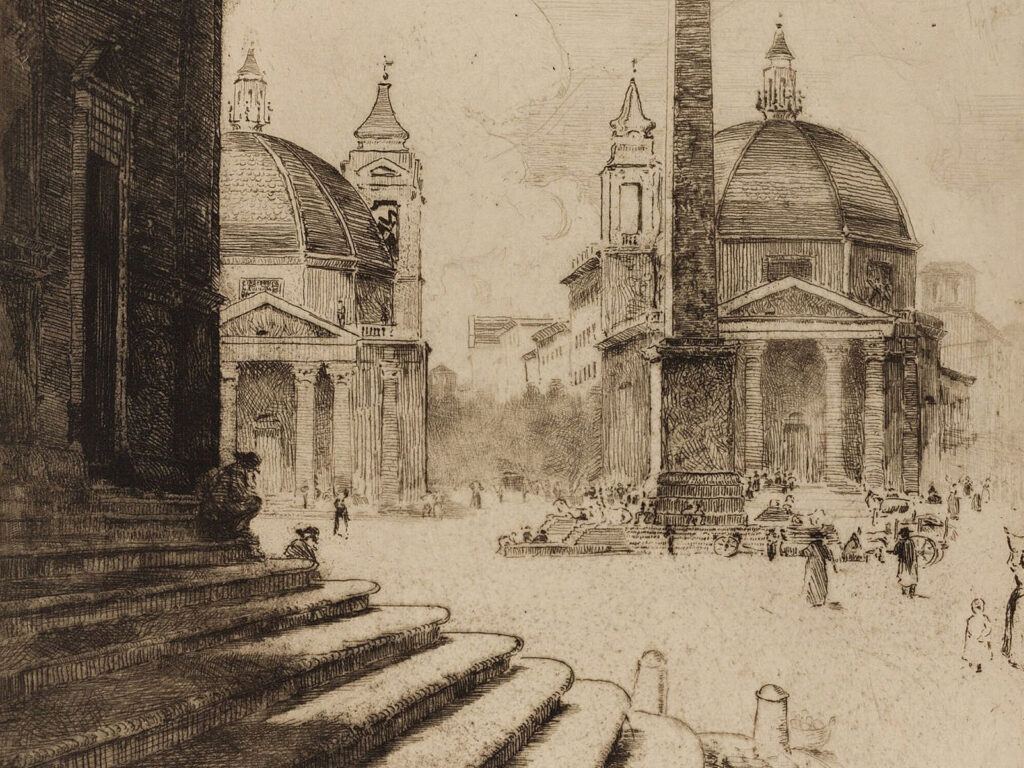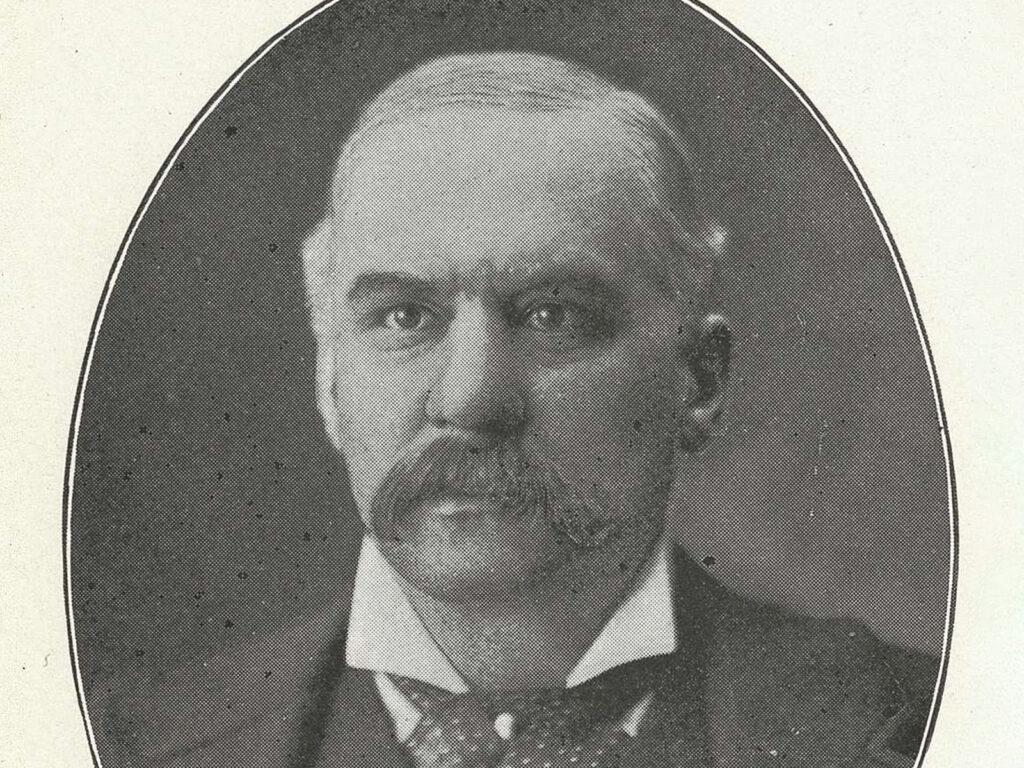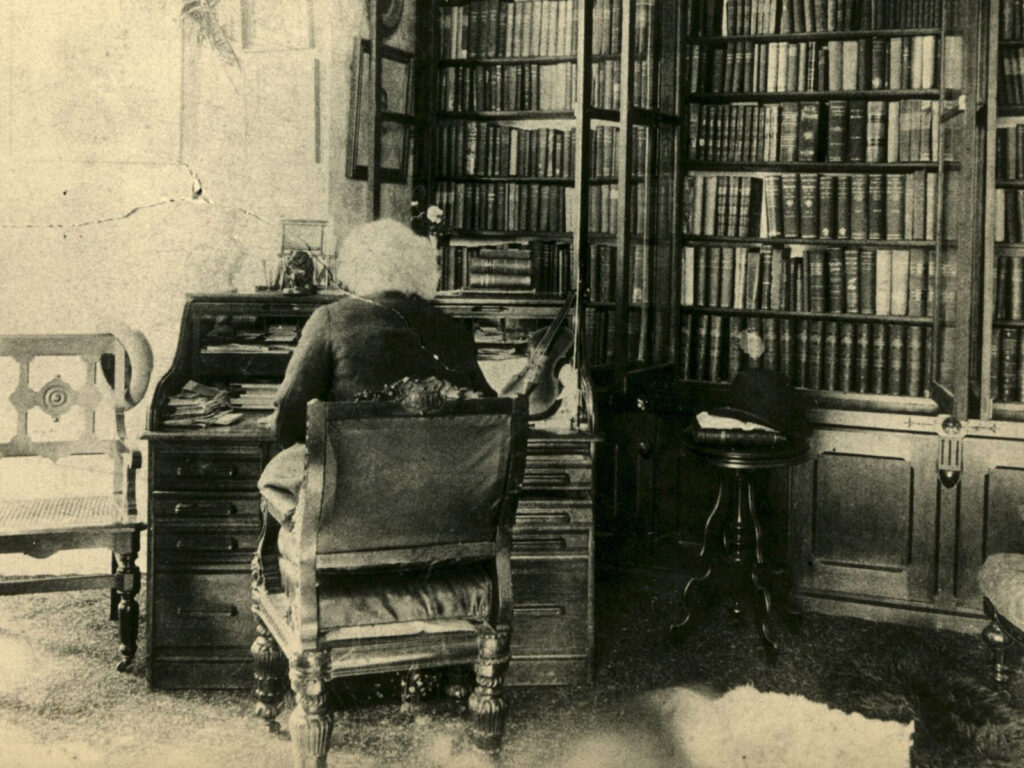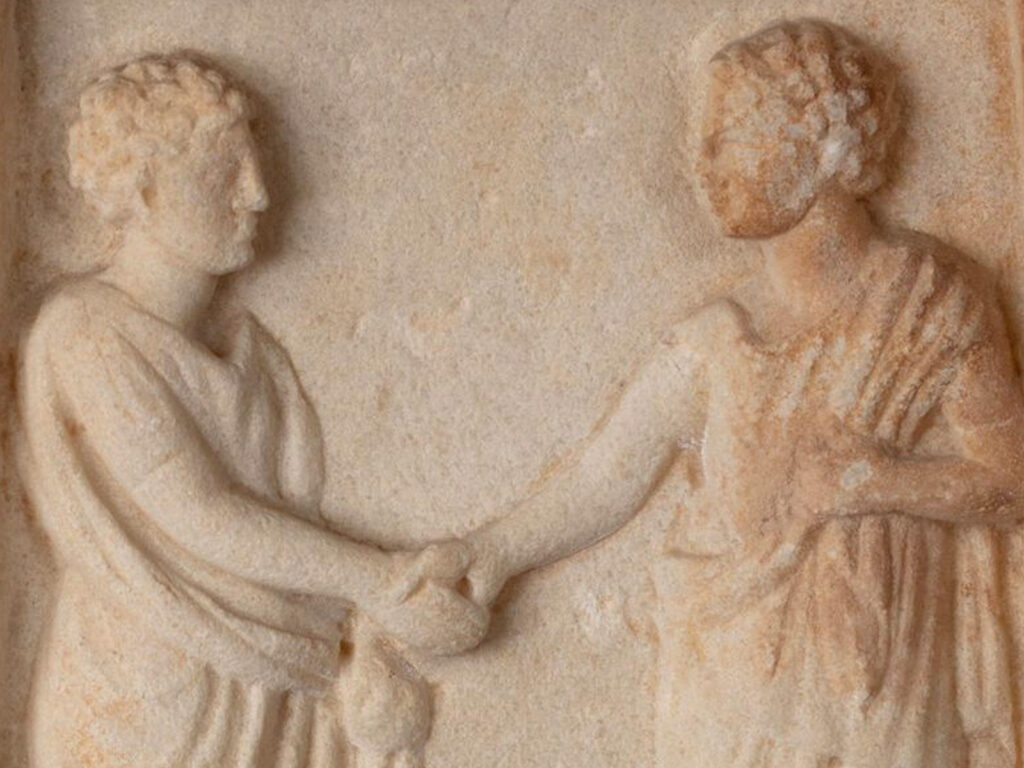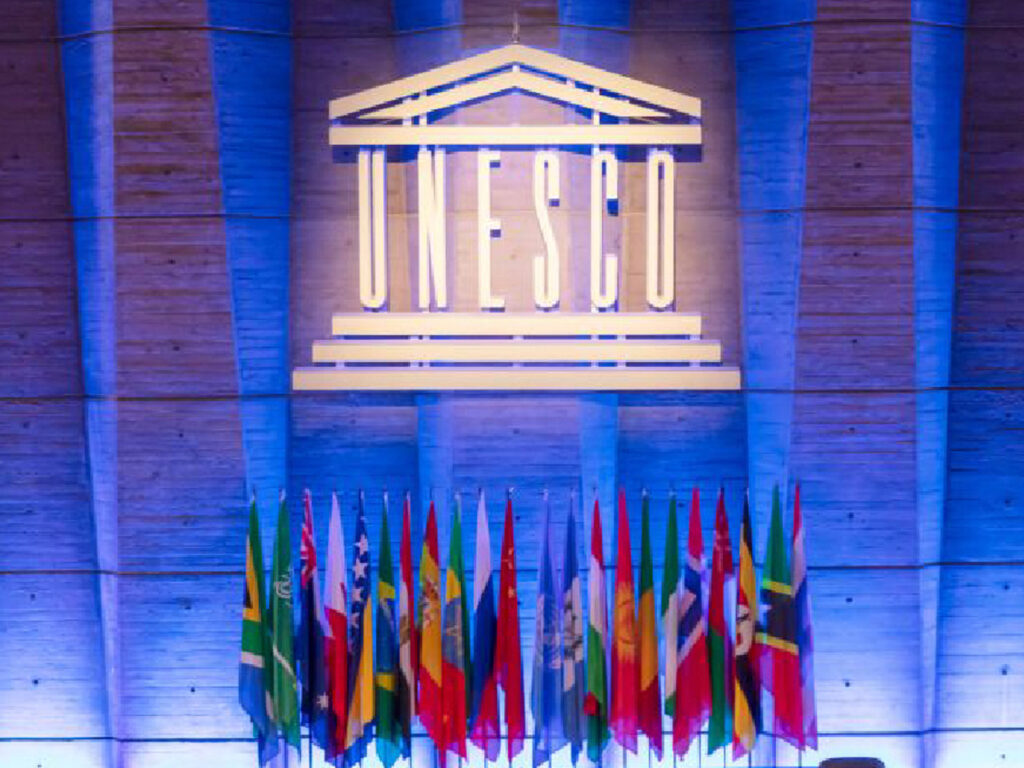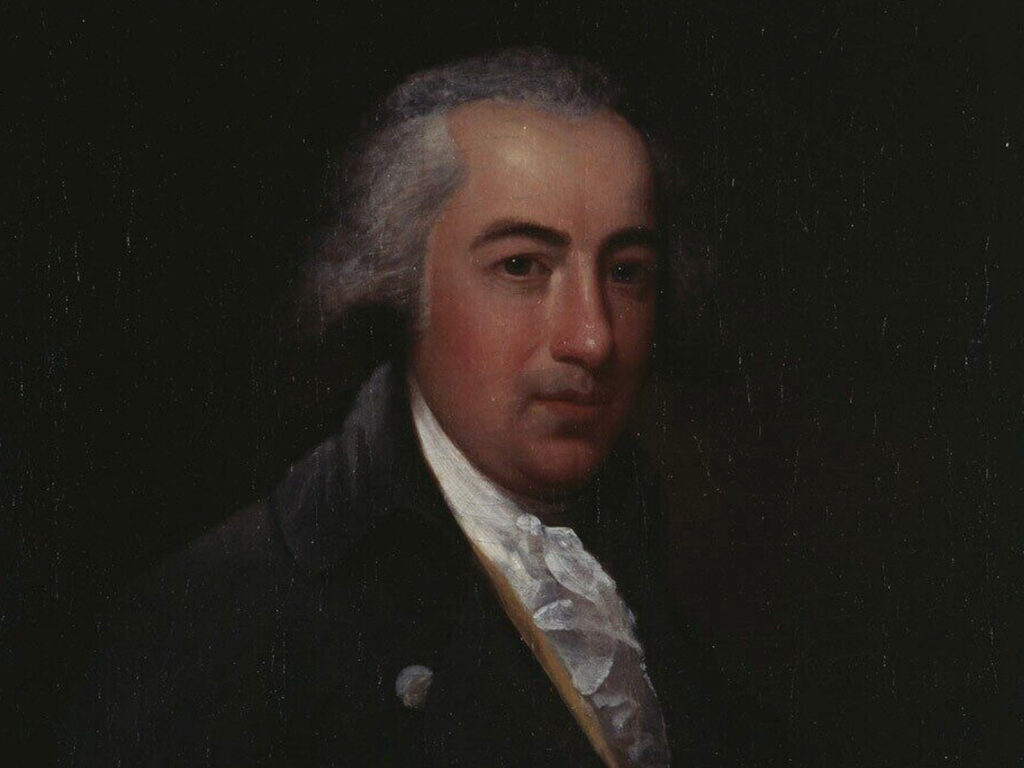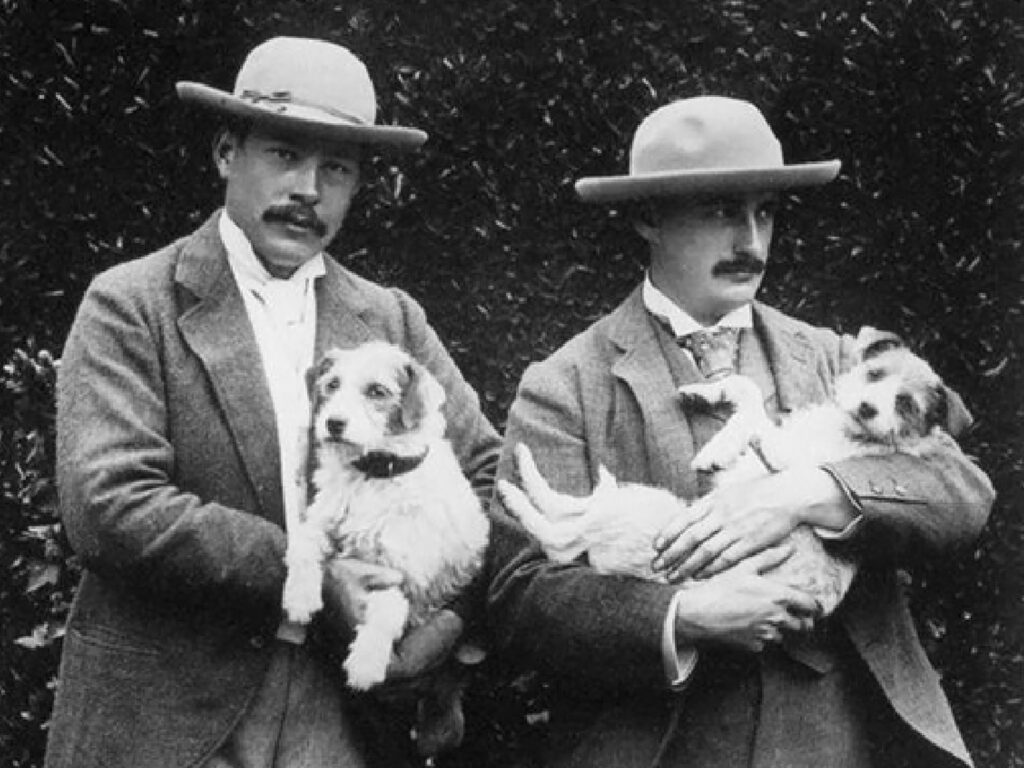When the Walker Art Building opened in 1894, Bowdoin College honored three of its most generous patrons in the naming of the school’s picture galleries. The oval Walker Gallery bore the name of Sophia Wheeler Walker, the mother of Theophilus Walker, for whom the Art Building was named. James Bowdoin III (1752–1811), who helped establish the College, and his father, James Bowdoin II, are both remembered by a large painting gallery. Engraved above the third gallery’s doorframe is the name Boyd for George William Boyd of Bowdoin’s Class of 1810.
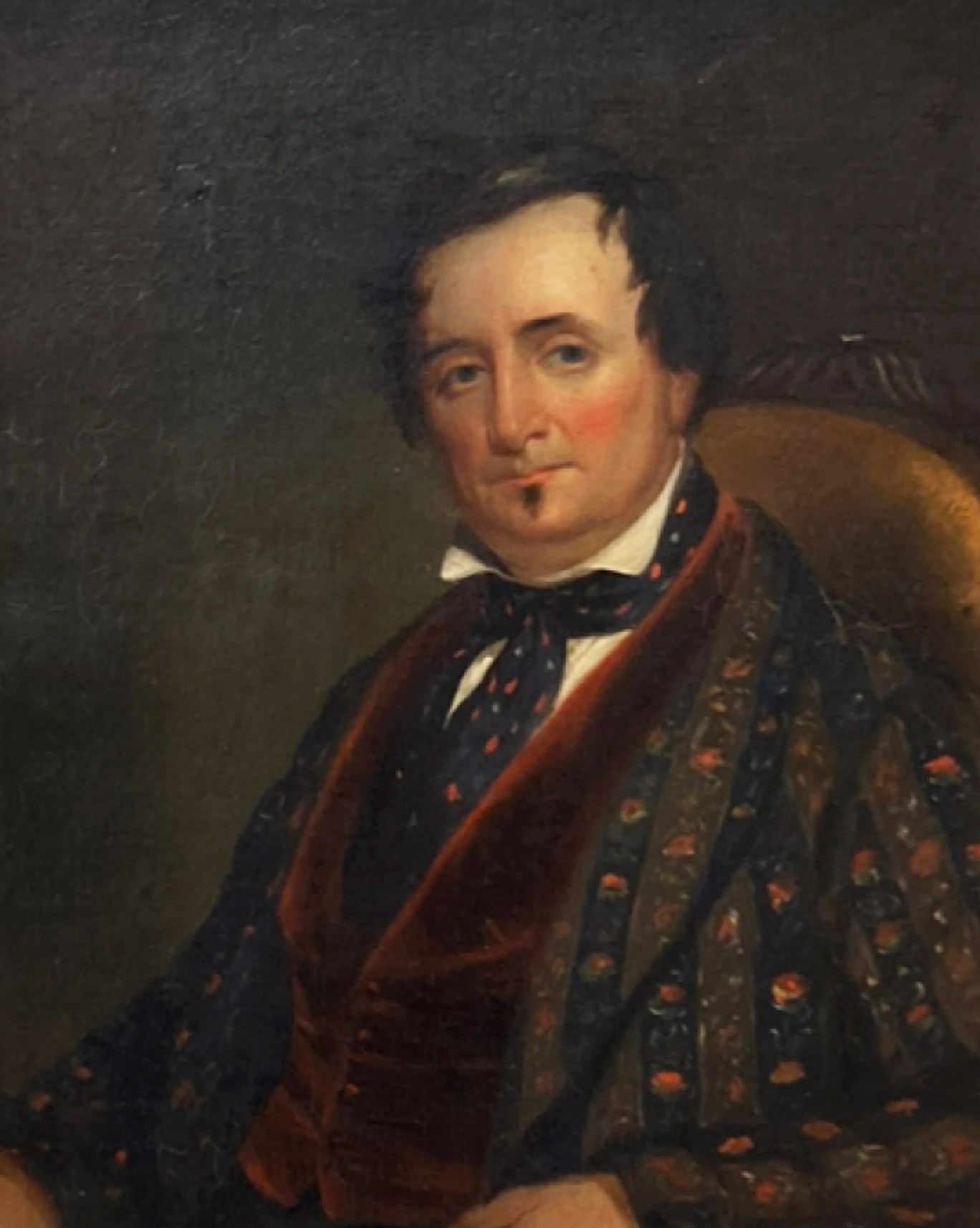
Unidentified artist, American, Colonel George William Boyd, ca. 1835, oil on canvas, Bowdoin College Museum of Art, Gift of Colonel George William Boyd, 1852.5.
George William Boyd
Laura F. SpragueUnidentified artist, American, Colonel George William Boyd, ca. 1845, oil on canvas, Bowdoin College Museum of Art, Gift of Colonel George W. Boyd, 1852.5.

Unidentified artist, French, Landscape with Architectural Ruins, late 17th c. oil on canvas, Bowdoin College Museum of Art. Gift of Colonel George W. Boyd, Class of 1810, 1852.20.
View object recordIn 1852, Boyd donated twenty European and American paintings which, when combined with the earlier gift of paintings and drawings from James III and Sarah Bowdoin, bolstered the nascent collection and its reputation. The group of paintings reveal Boyd’s classicizing tastes and the way that he furnished his home with ancient views. At Boyd’s death in 1860, he bequeathed the single largest gift from an alumnus the college had ever received. The College expressed its regard for him, affirming its belief that “his honored name will assuredly stand at the head of a long line of benefactors.” Surviving papers reveal an erudite and generous man—a cosmopolite, as he described himself.

Unidentified artist, Portsmouth, New Hampshire, The South West Prospect of the Seat of Col. George Boyd, 1774, oil on canvas. Philips Exeter Academy, gift of Thomas W. Lamont, Class of 1888.
George William Boyd led a fascinating life in both the northeast United States and the Deep South, filled with wide-ranging interests grounded in art, extended family, and friends. Born in 1791 in Portsmouth, New Hampshire, he was the only child of William Boyd (1770–1826) and Susan Green Martin (1773–1841). In 1787, William Boyd and his father George William Boyd (ca. 1733–87) had returned to Portsmouth, New Hampshire, from England where they resided during the Revolutionary War. The family’s seat was recorded in a rare landscape painting (illustrated above). Back in New Hampshire in 1790, William Boyd married Susan Green Martin, a member of a long-established Portsmouth family. Their son received one of the best educations available at the time, training first at Phillips Exeter Academy and then at Bowdoin College. In the History of Bowdoin, Nehemiah Cleaveland and Alpheus Packard noted Boyd’s student interest in belles-lettres; Boyd’s surviving papers also reveal his love of architecture, art patronage, literature, and poetry. He sketched architectural designs for houses, wrote letters in rhyme, advised young artists, and acquired pictures for his collection from dealers in New York City.
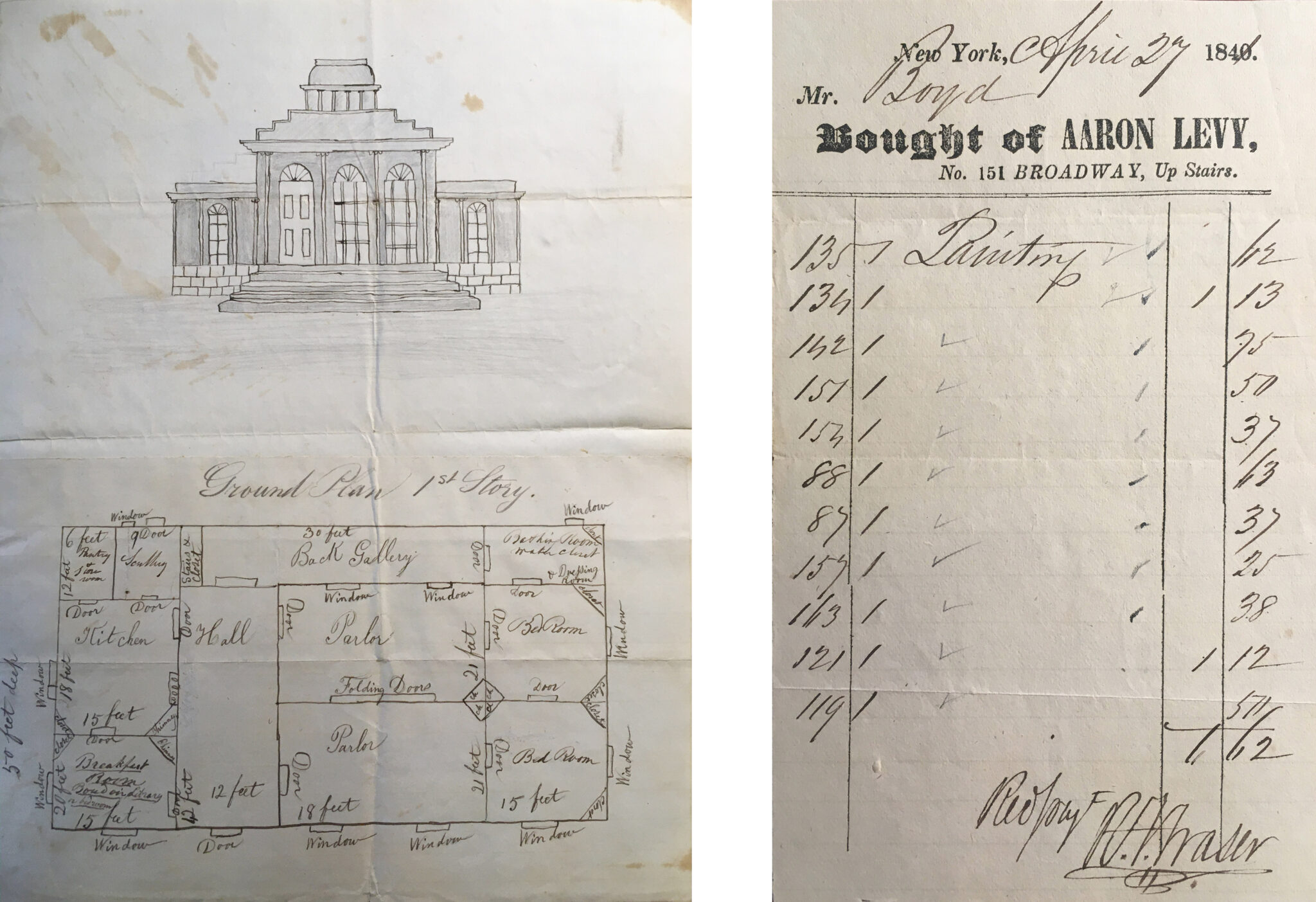
left, Attributed to George William Boyd (1791-1860), New York or Massachusetts, Elevation and Ground Plan, ca. 1840, ink and graphite on paper, George William Boyd Papers, Coll. 132, Maine Historical Society, Portland, Maine; right, Aaron Levy to [George William] Boyd, Invoice for eleven paintings, April 27, 1841, New York, New York, George William Boyd Papers, Coll. 132, Maine Historical Society, Portland, Maine.
Just out of Bowdoin, Boyd traveled to St. Petersburg, Russia, to visit family members. His letters reveal a young man conversant with architecture and life in Europe. On his return home the next year, he joined the United States Army, stationed first at the “Champlain frontier” during the War of 1812 and, after the war, in Baton Rouge, Louisiana, as an assistant adjutant general. His rank of colonel was an honorific Boyd used throughout his life. Upon retiring from the army in 1817, he joined his father in William Boyd & Son in New Orleans, to work as a merchant and auctioneer. In the Louisiana Advertiser (September 13, 1826), the firm listed for sale at auction “the slaves Milly and her son Jack, 38 and 12 years of age. Milly is a cook and washer, Jack a smart and intelligent boy.” Following his father’s death in 1826, Boyd continued his residence and varied activities in Louisiana. In 1831, he advantageously married Miriam Fowler Guerlain, the widow of Louis Guerlain, described as a “Parisian banker in New Orleans.” They returned to the northeast in 1839 and, following the deaths of both Miriam and his mother in 1839 and 1841, respectively, Boyd focused his attention on building and improving an estate in Orange, New Jersey, “to relieve my mind from despondency and ennui.” He assembled his paintings there, described as “very handsome[…]you have pictures enough to fill a gallery and if they are properly displayed no doubt would attract the attention of a great many.” They ranged from French landscapes to genre paintings and portraits. Three large paintings of landscapes with classical ruins illustrate Boyd’s interest in the ancient world.
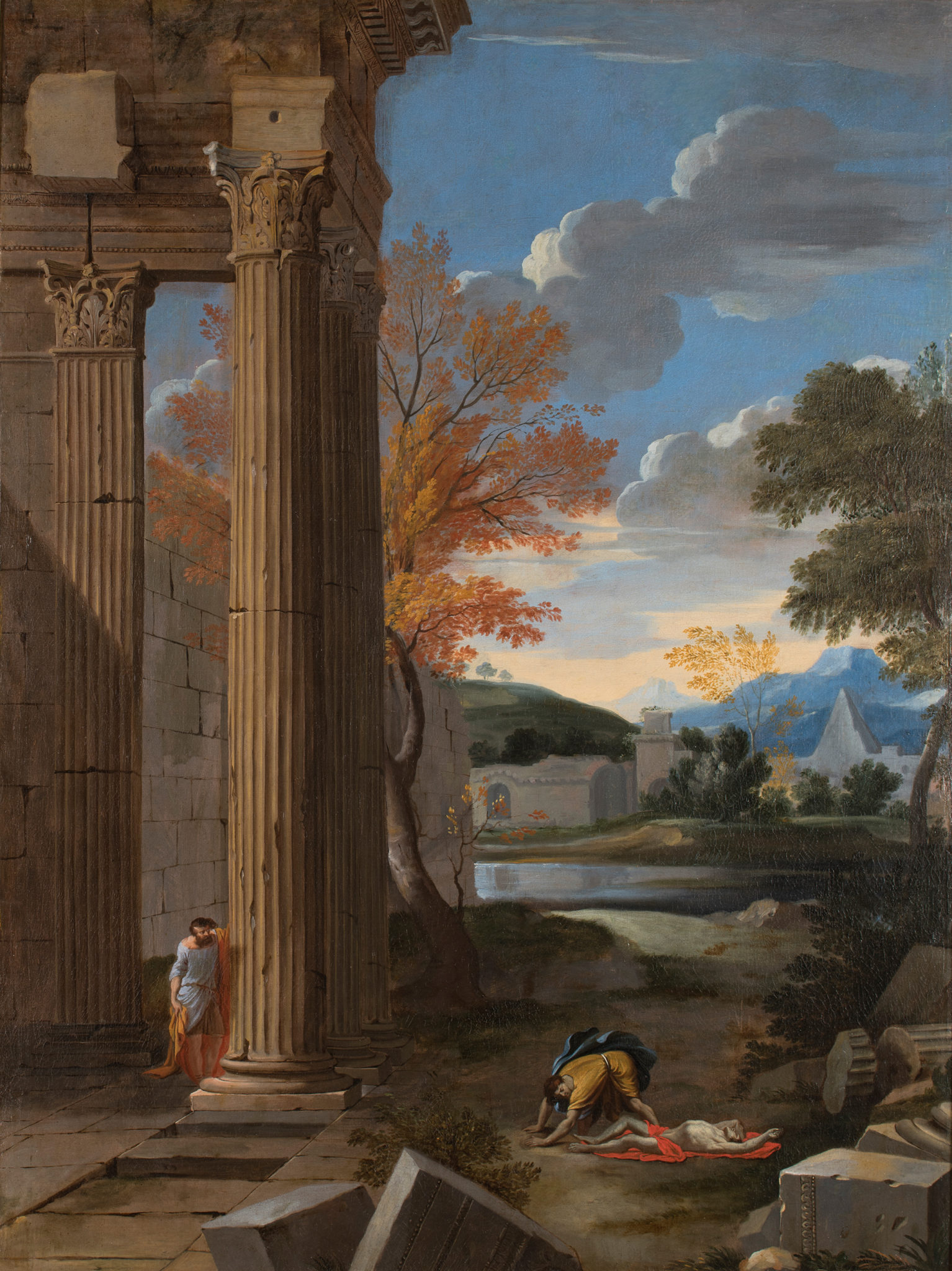
Unknown Artist, French, Landscape with Lofty Architectural Ruins, late 17th c. CE, oil on canvas. Bowdoin College Museum of Art, Gift of Colonel George W. Boyd, Class of 1810, 1852.17.
View object record
Elm House, from The Guide Book of Portland, Maine, 1859, Maine Historical Society, Portland, Maine.
Later in life, Boyd suffered from poor health, being described as “a cheerful valetudinarian, of philosophis temperament and kindly disposition.” Boyd had adopted a young man, who was named George W. Boyd, Jr. George Junior married Charlotte Walden, whose father Captain Green Walden was stationed in Portland, Maine, with the U.S. Revenue Cutter Service. This association brought the Colonel to Maine, as the younger Boyds often retreated there to escape the heat and disease of southern summers. Here, the Colonel enjoyed their company, living in summer in Cape Elizabeth, on the Fore River’s south shore (now South Portland), and during the winter at the Elm House, a convenient hotel in “the very heart and center” of Portland.
In 1854 as Boyd’s infirmities limited his activities, he received a letter from Nehemiah Cleaveland of the Class of 1813, who was writing fellow alumni to gather biographical material for a history of Bowdoin College. In this fortuitous exchange, Boyd reflected on his life since graduating in 1810, and two long letters written in 1858 survive as a kind of autobiography. Cleaveland rekindled a friendship as well as Boyd’s affinities for the College, which, a few years later, resulted in Boyd’s generous gift to his alma mater. Boyd died in Portland in 1860. He was interred in Proprietors Burying Ground in Portsmouth, New Hampshire, where his mother was also buried.
Nehemiah Cleaveland and Alpheus Spring Packard, History of Bowdoin College, With Biographical Sketches of Its Graduates From 1806 to 1879, Inclusive (Boston, MA: James Ripley Osgood and Company, 1882), 160; Letter, George William Boyd to Nehemiah Cleaveland, April 3, 1858, and Letter, George William Boyd to Nehemiah Cleaveland, June 9, 1858, George William Boyd, Class of 1810, file, George J. Mitchell Department of Special Collections & Archives, Bowdoin College Library.
George William Boyd, Class of 1810, file, George J. Mitchell Department of Special Collections & Archives, Bowdoin College Library. See also George W. Boyd Papers, Coll. 132, Maine Historical Society, Portland, Me., hereafter cited as Boyd Papers, MHS.
Boyd file, Portsmouth Athenaeum, Portsmouth, N. H. Thomas Hardiman, Keeper, kindly assisted with this research.
Cleaveland and Packard, History of Bowdoin College, 160. See "Ground Plan, 1st Story" with a "Back Gallery" and "Bowdoin Library," Business and Personal Correspondence, undated; for his rhymes, see Letter, George William Boyd to Ruth Mackay, New Orleans, Nov. 27, 1823, Correspondence, 1820–1823. Boyd encouraged the American artist Samuel Lane Crockett, see letter, George William Boyd to Samuel Lane Crockett, Sept. 2, 1848, Correspondence, 1848. On April 27, 1841, Boyd purchased eleven paintings from Aaron Levy, 151 Broadway, New York; Bills and Receipts, 1836–1841, Boyd Papers, MHS.
Letter, George William Boyd to Susan Boyd, St. Petersburg, Russia, October 11/24, 1811, Correspondence, and Papers, 1809-19, Boyd Papers, MHS.
Letter, George William Boyd to Nehemiah Cleaveland, April 3, 1858, George William Boyd, Class of 1810 file, George J. Mitchell Department of Special Collections & Archives, Bowdoin College Library.
Cleaveland and Packard, History of Bowdoin, 160.
Letter, George William Boyd to Nehemiah Cleaveland, April 3, 1858, George William Boyd, Class of 1810 file, George J. Mitchell Department of Special Collections & Archives, Bowdoin College Library.
Letter, George William Boyd, Jr., to George W. Boyd, Orange, NJ, Nov. 1, 1847, Correspondence and Papers, 1847, Boyd Papers, MHS. See Landscape with Lofty Architectural Ruins (1852.17), Landscape with Architectural Ruins (1852.20) and Classical Courtyard with Figure of Cavaliers (1852.19) and BCMA object files for Boyd gifts in 1852.
Cleaveland and Packard, History of Bowdoin, 160.
Letter, George William Boyd to Nehemiah Cleaveland, April 3, 1858, George William Boyd, Class of 1810, file, George J. Mitchell Department of Special Collections & Archives, Bowdoin College Library. George William Boyd, Jr.'s dates nor birth name have not been identified. Charlotte Walden was born in Portland, Maine, in 1827, and appears in the 1860 US Federal census living in Cape Elizabeth with her parents. Taken in June, it may record her northern residency during the summer.
Letters, Boyd to Cleaveland, Boyd, Class of 1810, file.
Boyd file, Portsmouth Athenaeum, Portsmouth, NH.
